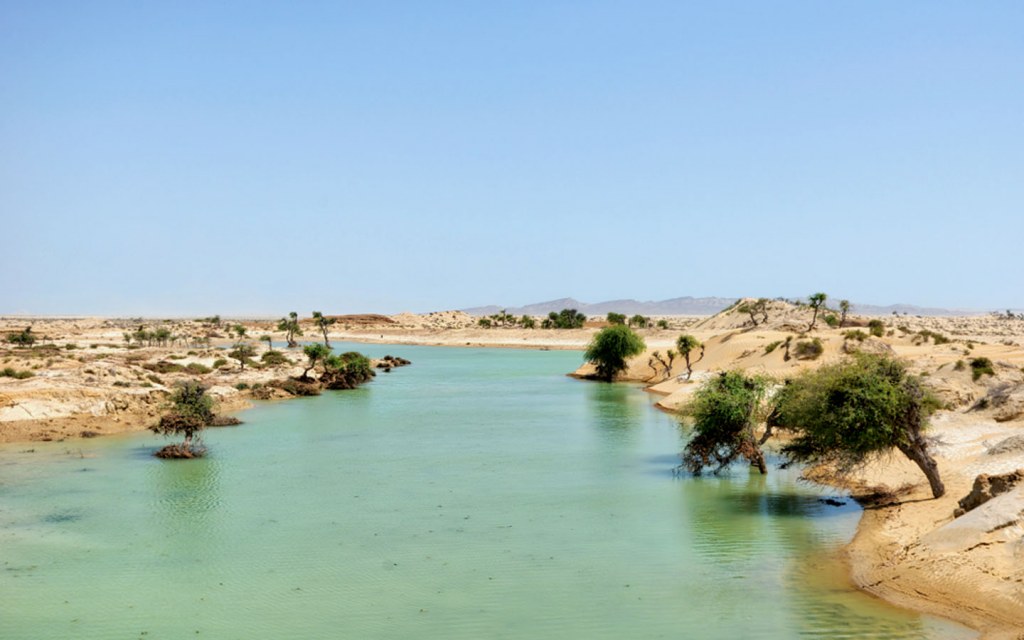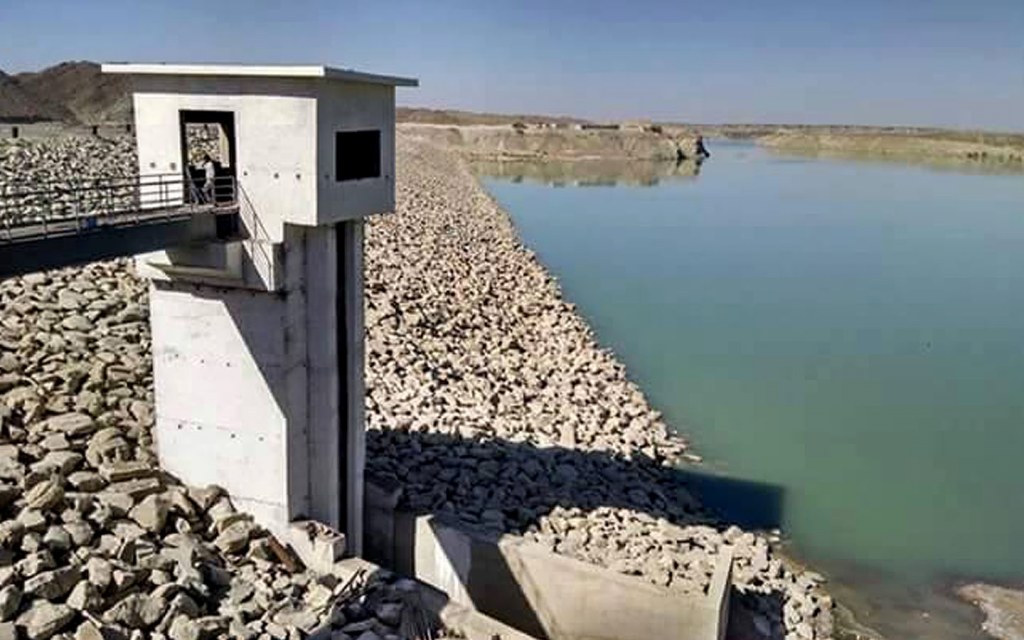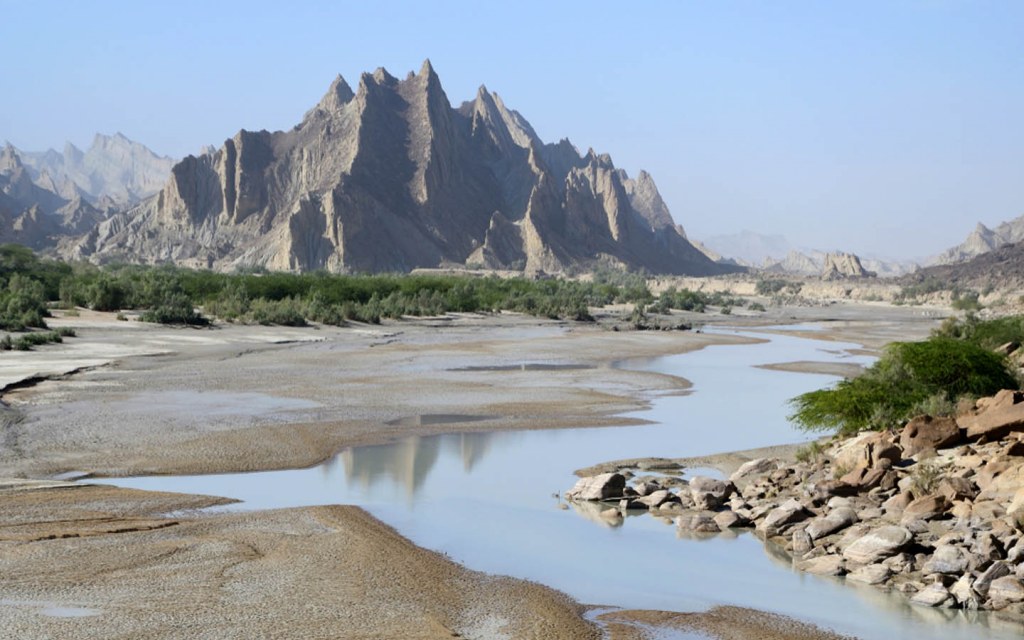Home » Construction » Water Table and Major Dams In Balochistan
IN THIS POST
–Rainfall in Balochistan
–Rivers In Balochistan
–List of Dams in Balochistan
–Other Major Water Sources In Balochistan
The largest province of Pakistan, Balochistan, has an interesting topography. It constitutes around 44 percent of the country’s total land and is more like a vast, barren land featuring extensive dry plateaus. Its rough terrains are divided into basins and valleys by gigantic mountainous ranges running all the way into the Iranian border. Since the water table in Balochistan is quite low, fetching water for irrigation is a major challenge in itself. So, in order to cope up with the water requirements in the province, the provincial and federal governments have sponsored the construction of many dams in Balochistan, some of which are operational while others are yet to be completed.
Before we give you an overview of dams in Balochistan, let’s get to know more about the amount of annual rainfall that the province receives on average.
Rainfall in Balochistan
On average, the amount of annual rainfall in Balochistan varies between 2 and 20 inches (50 to 500 mm). It is way less than many other regions in Pakistan. The areas that receive the maximum amount of rain in a year fall in the northeastern part of the province. The annual precipitation levels gradually decrease as you move towards the south and eastern parts of Balochistan. Places like Pasni, Turbat, Sibi Tump, and Usta Muhammad are desert-like regions that receive little to no rainfall annually.
Rivers In Balochistan

Despite the acute shortage of annual rainfall in Balochistan, it is home to some of the most fascinating streams and rivers of Pakistan, which originate from the freshwater springs and glaciers found in the northern regions. Like any other desert region on earth, a large part of the Balochistan province experiences extreme temperatures, especially in summers, where temperatures can go up to 50-degree centigrade during the daytime.
Soaring heat is one of the biggest reasons why most of the river beds in Balochistan remain dry, appearing like small streams. Hingol River, Dasht River, Hub River Gomal River Hapdrok River are some of the most famous rivers in Balochistan. Spread across hundreds of kilometres in the extensive plateau of Balochistan’s rough terrains, most of these rivers drain into the River Indus in the southeast of the province and Arabian Sea in its southwestern part, along the Makran Coastal Belt.
List of Dams in Balochistan (Operational & Under-construction)

Dams and barrages have also been constructed on rivers in Balochistan for the effective distribution of water meant for irrigation. So, let’s learn more about the infrastructure by referring to the table below:
Operational Dams In Balochistan
| Name | Location or Nearest City | Constructed On | Storage capacity(Cubic Metre) | Year of Completion |
| Spinkarez Dam | Quetta | Nar River and Murdar River | 6,800,000 | 1945 |
| Mana Storage Dam | Ziarat | Mana River | 1,825,000 | 1961 |
| Walitangi Dam | Quetta | Walitangi River | 510,000 | 1961 |
| Hub Dam | Malir | Hub River | 1,057,000,000 | 1979 |
| Mangi Dam | Ziarat | Boin Viala River | 130,000 | 1982 |
| Shadak Dam | Pishin | Shadak River | 86,000 | 1983 |
| Khad Koocha Dam | Mastung | Kad Koocha River | 117,000 | 1984 |
| Under Base Dam | Qila Saifullah | Under Base River | 86,000 | 1985 |
| Amach Dam | Mastung | Amach River | 1,675,000 | 1987 |
| Shiker Dam | Pishin | Shiker River | 61,000 | 1988 |
| Khajeer Dam | Qila Saifullah | Khajeer River | 308,000 | 1991 |
| Tooth Dam | Kalat | Tooth River | 490,000 | 1991 |
| Sasnak Mana Storage Dam | Ziarat | Sasnak River | 271,000 | 1993 |
| Band-e-Chaman Dam | Turbat | Band-e-Chaman River | 2,467,000 | 1994 |
| Nishpa Dam | Mastung | Nishpa River | 115,000 | 1994 |
| Pinakai Dam | Qila Saifullah | Pinakai River | 48,000 | 1994 |
| Tabai Dam | Quetta | Tabai River | 175,000 | 1994 |
| Akra Kaur Dam | Gwadar | Akra Kaur River | 21,000,000 | 1995 |
| Hingi Dam | Quetta | Hingi | 201,000 | 1996 |
| Tangi Dam | Qila Saifullah | Tangi River | 75,000 | 1997 |
| Mirani Dam | Makran | Dasht River | 373,000,000 | 2006 |
| Sabakzai Dam | Zhob | Zhob River | 32,700 | 2007 |
| Naulong Dam | Jhal Magsi | Mula River | n/a | 2015 |
Under-construction Dams In Balochistan
In addition to the aforementioned operational dams in Balochistan, provincial authorities in collaboration with the federal government have undertaken the ‘100 Dam Balochistan’ initiative to solve. It is one of the water conservation efforts by the government to solve the problem of water shortage in Balochistan. According to this project, around 100 dams and barrages will be constructed in the province in different phases.
As per the project director of ‘100 Dams in Balochistan’ Shoaib Ahmed Tareen, the first phase of this initiative is going to involve the construction of 19 new dams in Balochistan. Initially, the plan was to build 24 dams in the first phase but the construction plans of 5 out of 24 dams were sent for re-modification. The proposed 19 new dams in Balochistan will be constructed in 16 districts of the region. The initiative would help raise the levels of the water table in Balochistan.
Other Major Water Sources In Balochistan

Along with rivers dams and streams, other major water sources in Balochistan include tube wells, dug wells, karezes (a sloping underground water channel) and springs. Despite the problem of water shortage in Balochistan, these are some of the main sources of water for the irrigation of cash crops including orchards in the province as well as domestic and commercial uses.
Now that we have given you all the information about the operational and under-construction dams in Balochistan as well as other water sources in the province, it’s time for us to wrap up this blog. If you have any queries or feedback related to our blog, don’t hesitate to get in touch with us at blog@zameen.com. We’d love to hear from you.
Meanwhile, you might also want to read our blogs on China-Pakistan Economic Corridor (CPEC) projects, on-going renewable energy projects, solar energy in Pakistan, and some of the most famous dams in Pakistan to fetch more interesting information about our beloved homeland.
Bookmark Zameen Blog in your browser and keep reading more of our informative pieces. Subscribe to our email newsletter and don’t miss out on any of the updates from our blog section. Also, keep reading Zameen News and stay informed.
*Cover Source: Facebook/Developing Pakistan



